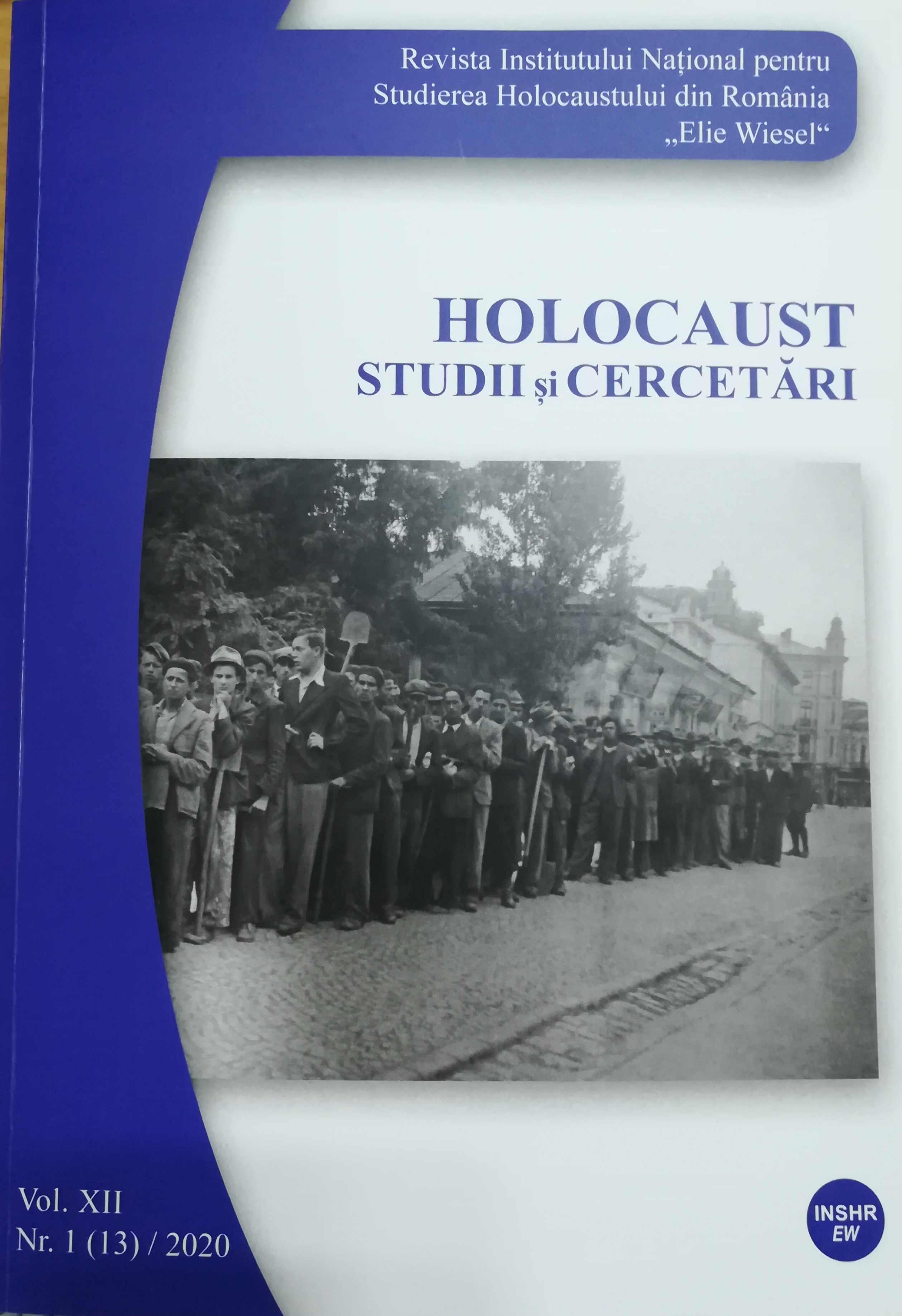The Holocaust of the Vatra Dornei Jews, March – October 1941
The Holocaust of the Vatra Dornei Jews, March – October 1941
From Dispossession of Goods to Ghettoization and Deportation
Author(s): Nicolae Emilian DrancaSubject(s): Local History / Microhistory, Social history, WW II and following years (1940 - 1949), Fascism, Nazism and WW II, History of the Holocaust, History of Antisemitism
Published by: Institutul National pentru Studierea Holocaustului din Romania ELIE WIESEL
Keywords: Bukovina; Vatra Dornei; ghettoization; trains; deportation; Transnistria;
Summary/Abstract: This research has several objectives in mind. The first is to identify the exact location of the ghetto in Vatra Dornei, that existed in October 1941. So far, no one has found and described exactly the streets where this ghetto was located or the capacity it had. The second objective is to identify people who were confined in that ghetto before being deported to Transnistria. The third objective is to identify the participants in the confinement of the Jewish population in the ghetto, respectively the perpetrators and co-perpetrators of crimes and abuses committed against the Jewish population of Vatra Dornei, in 1941. The Jews of Vatra Dornei were especially active in hotels and services, forestry, as well as in the liberal professions. From the Vatra Dornei area, according to some sources, approximately 2,500 Jews were deported together with other Jews from Câmpulung – a total of 6,118 people. At the request of the local and German authorities, 21 Jews were sent back from Transnistria to VatraDornei, because they were effectively indispensable. This research on the Holocaust conducted at the scale of small community can be compared to the development of the cell in an organism. The Holocaust would not have existed without these small cells multiplied hundreds of times, maybe even thousands of times. In addition, this micro-history, researched and analyzed, reveals details that are also arguments for contesting the theses according to which the Holocaust began only after 22 June 1941, or it was possible only where state institutions were dissolved. The main sources for this research are made up of the National Archives in Suceava.
Journal: Holocaust. Studii şi cercetări
- Issue Year: XII/2020
- Issue No: 13
- Page Range: 95-115
- Page Count: 21
- Language: English
- Content File-PDF

